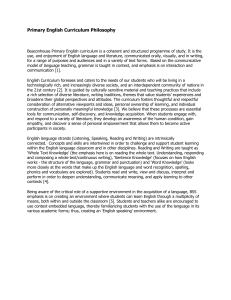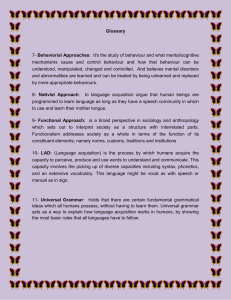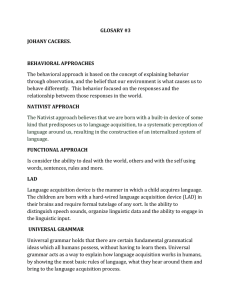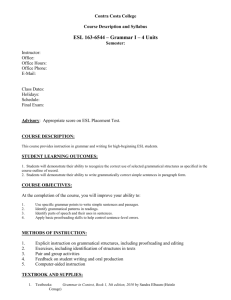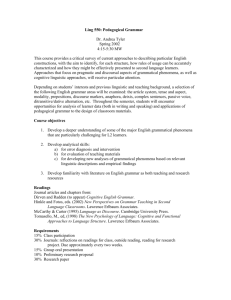Think-Tank - Geoff Barton
advertisement
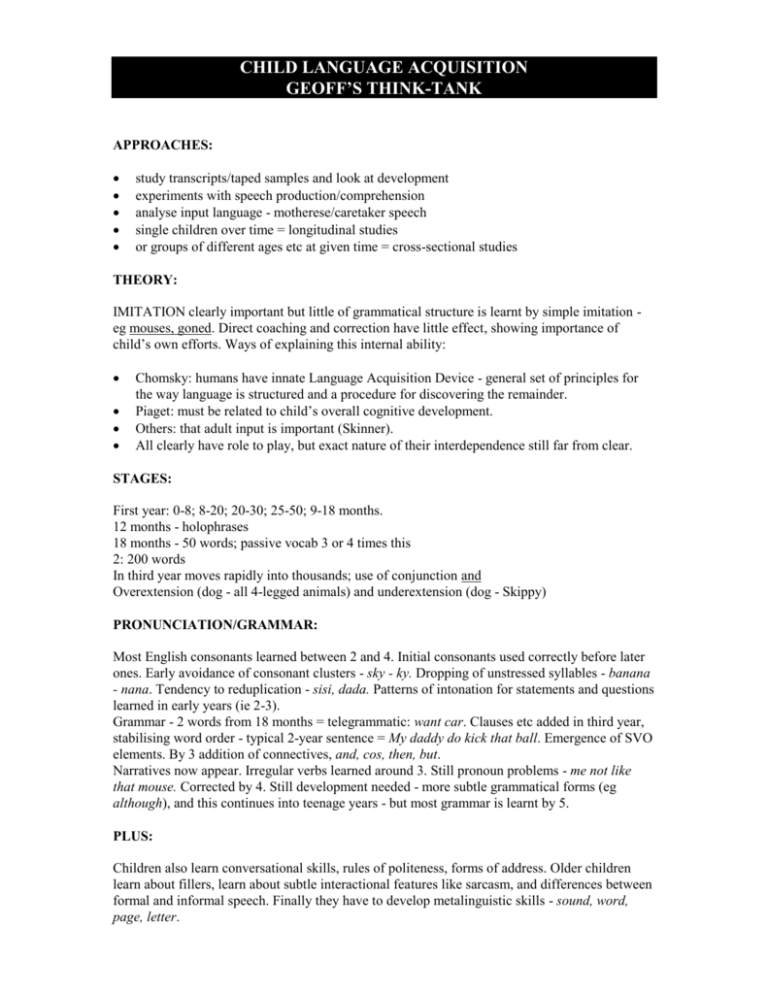
CHILD LANGUAGE ACQUISITION GEOFF’S THINK-TANK APPROACHES: study transcripts/taped samples and look at development experiments with speech production/comprehension analyse input language - motherese/caretaker speech single children over time = longitudinal studies or groups of different ages etc at given time = cross-sectional studies THEORY: IMITATION clearly important but little of grammatical structure is learnt by simple imitation eg mouses, goned. Direct coaching and correction have little effect, showing importance of child’s own efforts. Ways of explaining this internal ability: Chomsky: humans have innate Language Acquisition Device - general set of principles for the way language is structured and a procedure for discovering the remainder. Piaget: must be related to child’s overall cognitive development. Others: that adult input is important (Skinner). All clearly have role to play, but exact nature of their interdependence still far from clear. STAGES: First year: 0-8; 8-20; 20-30; 25-50; 9-18 months. 12 months - holophrases 18 months - 50 words; passive vocab 3 or 4 times this 2: 200 words In third year moves rapidly into thousands; use of conjunction and Overextension (dog - all 4-legged animals) and underextension (dog - Skippy) PRONUNCIATION/GRAMMAR: Most English consonants learned between 2 and 4. Initial consonants used correctly before later ones. Early avoidance of consonant clusters - sky - ky. Dropping of unstressed syllables - banana - nana. Tendency to reduplication - sisi, dada. Patterns of intonation for statements and questions learned in early years (ie 2-3). Grammar - 2 words from 18 months = telegrammatic: want car. Clauses etc added in third year, stabilising word order - typical 2-year sentence = My daddy do kick that ball. Emergence of SVO elements. By 3 addition of connectives, and, cos, then, but. Narratives now appear. Irregular verbs learned around 3. Still pronoun problems - me not like that mouse. Corrected by 4. Still development needed - more subtle grammatical forms (eg although), and this continues into teenage years - but most grammar is learnt by 5. PLUS: Children also learn conversational skills, rules of politeness, forms of address. Older children learn about fillers, learn about subtle interactional features like sarcasm, and differences between formal and informal speech. Finally they have to develop metalinguistic skills - sound, word, page, letter. “The task of language acquisition is complex. The fact that it is largely achieved by puberty makes it one of the most remarkable (if not the most remarkable) of all learning achievements. DC. (Dave, to us). GB: March 6, 2016
